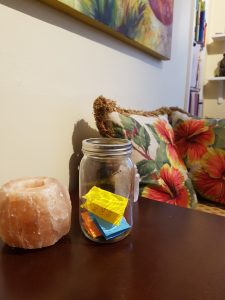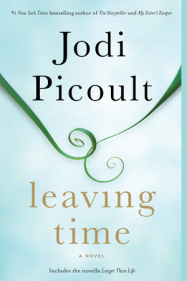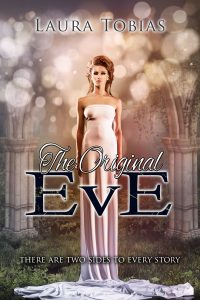 Books make awesome gifts. If you’re looking for the right title for that special someone, here’s a selection of books I’ve enjoyed reading this year. If my suggestions don’t resonate or if you’re still feeling uncertain, wrap up a gift card to an independent book store or on line book seller.
Books make awesome gifts. If you’re looking for the right title for that special someone, here’s a selection of books I’ve enjoyed reading this year. If my suggestions don’t resonate or if you’re still feeling uncertain, wrap up a gift card to an independent book store or on line book seller.
Books make awesome gifts. I know I said that already, but it’s worth repeating.
For fiction Lovers:
General Fiction: The Almost Sisters by Jocelyn Jackson. A timely southern drama featuring quirky characters, sharp writing, and a complex story that manages to deal with some heavy issues yet not get bogged down. I love Jackson’s writing and this was a satisfying read.
Map of the Heart by Susan Wiggs. A nicely layered, emotional story that moves between present day and World War 11 France. The setting is beautifully rendered, family dynamics (and the concept of a second chance at love) are deftly explored, and there’s a bit of a mystery that kept me turning the pages until the end.
Romance: Blood Vow by J.R. Ward. I’m a huge fan of Ward’s Black Dagger Brotherhood series so naturally I wanted to dip into her Black Dagger Legacy series. This, the story of Axe and Elise, is book two in the series and it’s dark, sexy, funny and fast-paced. It’s the perfect read for vampire aficionados, or for those who need to be converted.
Dating-ish by Penny Reid is book six in Reid’s Knitting in the City Series though I read it as a standalone and it worked well for me. Fresh and funny with surprising depth and intensity, the character development and attraction between Matt and Marie was extremely well done. Reid was a new-to-me author and I’ll be looking for more of her books.
Young Adult:
Julia Vanishes by Catherine Egan. A thought-provoking young adult fantasy with touches of mystery and suspense, Julia Vanishes is book one in the Witch’s Child Series. Julia is an appealingly flawed heroine with the ability to make herself unseen, a skill that comes in handy since she’s a spy and thief. Clever, original and ideal for readers who appreciate strong female protagonists and fantasy fiction.
Autoboyography by Christina Lauren. A poignant coming-of-age novel about two boys who fall in love in a writing class, one who comes from a progressive family and the other from a deeply religious one. Beautifully written and a profound look at bisexuality, the love of family, religion and how we view right and wrong.
For the wee readers on your list, Stephanie Simpson McLellan’s The Christmas Wind is a gorgeous, just released picture book and a lovely reminder of what’s really important, not just at Christmas but throughout the year.
For mystery thriller fans The Good Daughter by Karin Slaughter. Here’s the promo line for the book: Two girls are forced into the woods at gunpoint. One runs for her life. One is left behind. If you like thrillers, how can you not buy it? I did and I loved it. Anybody who appreciates a good, dark read will devour this book.
For the non-fiction lovers on your list, check out these titles:
Daring to Drive: A Saudi Woman’s Awakening by Manal Al-Sharif. A gripping true story by Manal, a devout woman from a modest family in Saudi Arabia who was arrested by the religious police for daring to drive. While there’s no law forbidding women from driving, the religious police are powerful; Manal became the unexpected leader of a courageous movement to support women’s right to drive.
Option B: Facing Adversity, Building Resilience and Finding Joy by Sheryl Sandberg and Adam Grant. Sandburg, the COO of Facebook, faced the unexpected death of her 47-year-old husband while they were away on holiday. What followed was painful and raw as she tried to figure out what life could look like when it wasn’t what she had planned. Not always an easy read but one that lingered with me afterwards.
Coming to My Senses: The Making of a Counterculture Cook by Alice Waters. Any foodie on your list has heard of Water’s Chez Panisse, the iconic restaurant which quite literally redefined North American cuisine for chefs and food lovers. This memoir recounts the events leading up to the opening of America’s most influential restaurant.
Since we’re talking about food, there’s always a time when you want to get in and out of the kitchen quickly, yet still want to eat well. That’s why Jamie Oliver’s 5 Ingredients, Quick & Easy Food is wrapped and under the tree waiting for a lucky recipient in my life. I may have to spring for my own copy; I have several of Oliver’s books and this one looks like a keeper too.
Finally, any gardener, no matter what they like to grow, will appreciate receiving a copy of The Bee Friendly Garden by Kate Frey and Gretchen LeBuhn. Winner of the American Horticultural Society 2017 Book Award, this book gives you all the information you need to create a vibrant and colorful habitat that will attract both honeybees and native bees. And with threats to our beloved honeybees on the increase, it’s a resource every gardener will utilize over and over again.
 Last January I started a gratitude jar. Whenever I thought of it – sometimes every day or maybe a few times a week – I’d jot down something I was grateful for and slip the colorful Post-It note into a jar. This practise has been around for a while; I’m sure you’ve heard of it.
Last January I started a gratitude jar. Whenever I thought of it – sometimes every day or maybe a few times a week – I’d jot down something I was grateful for and slip the colorful Post-It note into a jar. This practise has been around for a while; I’m sure you’ve heard of it.
 Gardeners and farmers know the importance of fallow ground. Allowing a field or a garden bed to rest for a bit – to go fallow – gives the soil’s nutrient balance a chance to naturally restore itself. As the ground rests, fertility can be restored. Letting ground go fallow was a common practice centuries ago, but it’s not as common anymore. As commercial fertilizers became more readily available and the agricultural industry became ever more competitive, it became less and less popular to leave land fallow. Constant production was the goal.
Gardeners and farmers know the importance of fallow ground. Allowing a field or a garden bed to rest for a bit – to go fallow – gives the soil’s nutrient balance a chance to naturally restore itself. As the ground rests, fertility can be restored. Letting ground go fallow was a common practice centuries ago, but it’s not as common anymore. As commercial fertilizers became more readily available and the agricultural industry became ever more competitive, it became less and less popular to leave land fallow. Constant production was the goal.
 Books make awesome gifts. If you’re looking for the right title for that special someone, here’s a selection of books I’ve enjoyed reading this year. If my suggestions don’t resonate or if you’re still feeling uncertain, wrap up a gift card to an independent book store or on line book seller.
Books make awesome gifts. If you’re looking for the right title for that special someone, here’s a selection of books I’ve enjoyed reading this year. If my suggestions don’t resonate or if you’re still feeling uncertain, wrap up a gift card to an independent book store or on line book seller. The garden is one of my best teachers and I was reminded of that last week when we picked kiwifruit from our vines. Seventy-five of the fuzzy, egg-shaped fruits if you want an exact number. I planted the vines myself over a decade ago and this is the first year we’ve had any kind of harvest.
The garden is one of my best teachers and I was reminded of that last week when we picked kiwifruit from our vines. Seventy-five of the fuzzy, egg-shaped fruits if you want an exact number. I planted the vines myself over a decade ago and this is the first year we’ve had any kind of harvest. of blooms, googled, scratched our heads, googled some more. Finally we took the delicate flowers out the peninsula to a famed tropical fruit grower who told us within seconds that we had unfortunately been sold two male vines. Mislabelling tended to be a fairly common risk with kiwifruit vines, he said, adding that he’d lost track of the number of customers who’d come to him with the same problem. And so what to do?
of blooms, googled, scratched our heads, googled some more. Finally we took the delicate flowers out the peninsula to a famed tropical fruit grower who told us within seconds that we had unfortunately been sold two male vines. Mislabelling tended to be a fairly common risk with kiwifruit vines, he said, adding that he’d lost track of the number of customers who’d come to him with the same problem. And so what to do? Last week, Donald Trump ended a ban on importing elephant trophies into the United States. A few days later, he announced via twitter that he was temporarily reversing that decision, pending a review (and by the time you read this the ban could be off once again). It would be nice to think Trump bowed to the public outcry but I don’t think that’s likely. Public outcry doesn’t seem to sway him one way or another.
Last week, Donald Trump ended a ban on importing elephant trophies into the United States. A few days later, he announced via twitter that he was temporarily reversing that decision, pending a review (and by the time you read this the ban could be off once again). It would be nice to think Trump bowed to the public outcry but I don’t think that’s likely. Public outcry doesn’t seem to sway him one way or another.




 Every year when we switch back to standard time and fall back an hour, the familiar cry goes out on social media: why do this? Why not stay with daylight saving time all year long? I don’t have an answer, but until this year I’ve always been happy to make the switch. I love getting the extra hour of sleep at the time of the change, and I also love that it’s lighter in the morning and darker earlier at night. I guess it suits my personal biorhythms or something, especially as fall rolls around. This year, however, Luna has had trouble adjusting to the change. Dawn – referred to around here lately as yawn – comes earlier than we’d like it to and crawling out of bed has been a bit of a struggle. I’m slowly adjusting. The coffee is set to brew even earlier and I’m taking advantage of the extra time to get in a little reading before the writing day starts. Here’s what I’m reading this month:
Every year when we switch back to standard time and fall back an hour, the familiar cry goes out on social media: why do this? Why not stay with daylight saving time all year long? I don’t have an answer, but until this year I’ve always been happy to make the switch. I love getting the extra hour of sleep at the time of the change, and I also love that it’s lighter in the morning and darker earlier at night. I guess it suits my personal biorhythms or something, especially as fall rolls around. This year, however, Luna has had trouble adjusting to the change. Dawn – referred to around here lately as yawn – comes earlier than we’d like it to and crawling out of bed has been a bit of a struggle. I’m slowly adjusting. The coffee is set to brew even earlier and I’m taking advantage of the extra time to get in a little reading before the writing day starts. Here’s what I’m reading this month: Plastic flowers are popping up around here like fall mushrooms sprouting in my lawn. And when something shows up repeatedly in a fairly short time I think the universe is trying to get my attention. I’m weird that way.
Plastic flowers are popping up around here like fall mushrooms sprouting in my lawn. And when something shows up repeatedly in a fairly short time I think the universe is trying to get my attention. I’m weird that way.
 Tis the season of Halloween which many people consider a scary or spooky time. In fact, Halloween is based on an ancient festival of the dead called Samhain. At Samhain, it was thought that the veil between the physical and spiritual realms became extremely thin, allowing contact with ancestors and spirits. Given that, I decided it was the perfect time to release a short story about Adam and Eve, original ancestors par excellence. The Original Eve is a Laura Tobias title and it’s a very short read. If you’re interested, you’ll find the Amazon purchase link below this blog.
Tis the season of Halloween which many people consider a scary or spooky time. In fact, Halloween is based on an ancient festival of the dead called Samhain. At Samhain, it was thought that the veil between the physical and spiritual realms became extremely thin, allowing contact with ancestors and spirits. Given that, I decided it was the perfect time to release a short story about Adam and Eve, original ancestors par excellence. The Original Eve is a Laura Tobias title and it’s a very short read. If you’re interested, you’ll find the Amazon purchase link below this blog.

 The days are getting shorter, the nights are getting colder and the fields are full of pumpkins (I had my annual pumpkin pie feast about a week ago). Usually by now, the outside chores are done and I have lots more time to relax and read. But this year it hasn’t quite worked out that way. We devoted a few extra weekends to putting the garden to bed: digging, weeding, deadheading, cleaning, and covering most of the beds with black landscape fabric to discourage weeds from sprouting when the weather warms up. With luck, it’ll make things easier for us in spring.
The days are getting shorter, the nights are getting colder and the fields are full of pumpkins (I had my annual pumpkin pie feast about a week ago). Usually by now, the outside chores are done and I have lots more time to relax and read. But this year it hasn’t quite worked out that way. We devoted a few extra weekends to putting the garden to bed: digging, weeding, deadheading, cleaning, and covering most of the beds with black landscape fabric to discourage weeds from sprouting when the weather warms up. With luck, it’ll make things easier for us in spring.
Comments